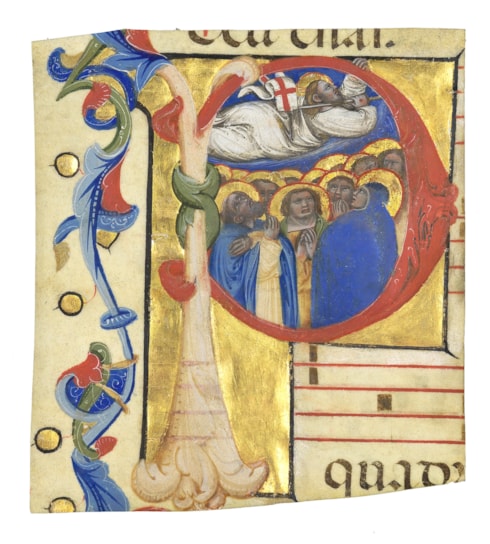
Niccolò di GIACOMO
Bologna c.1325 - Bologna c.1403
Biography
One of the leading manuscript illuminators of the Trecento in Italy, Niccolò (or Nicolò) di Giacomo di Nascimbene was active in Bologna over a period of more than half a century, between 1349 and 1403. As the home of a great university, Bologna was a major centre of manuscript illumination in the 14th century. Several illuminators working in the city in this period are known by name, of which the best known and most famous today, as well as perhaps the most prolific, was Niccolò di Giacomo. One of the few Trecento Bolognese illuminators who regularly signed his works (as one scholar has noted, ‘Departing from the traditional anonymity of his predecessors and contemporaries, Nicolò made it a point to prominently sign his main miniatures’), he is thought to have been a pupil of the anonymous illuminator known as the Master of 1346, who was the leading artist in the field in Bologna in the 1340s.
Niccolò di Giacomo’s first dated work is an antiphonary of 1351 from the Bolognese monastery complex of San Michele in Bosco, now in the Biblioteca Estense in Modena, and within a few years he came to dominate the production of both liturgical and secular illuminated manuscripts in and around Bologna in the second half of the 14th century. He must have supervised a large workshop, and his signature appears on a large number of works, including choir books, legal and humanistic texts, private devotional books, guild registers and communal statutes. Appointed illuminator to the city of Bologna in the 1380s, Niccolò’s reputation and success are also confirmed by the fact that he held other public offices in Bologna - notably his election, alongside the painter Simone dei Crocifissi, to the city’s consiglio dei quattrocento in 1394 - and also owned numerous properties in the city.
As has recently been noted, Niccolò di Giacomo ‘became one of the most prolific Bolognese illuminators of the second half of the Trecento, illuminating legal texts...guild registers, secular texts, and liturgical books. Using a fairly limited palette that included vermilion, lead white, iron-gall brown ink, carbon black, azurite, and an organic pink, this book painter created some of the most engaging and lively illuminations of the era.’ He was the founder of an extended family of artists in Bologna which spread over four generations and included some thirteen painters and two illuminators, including his nephew, Jacopo di Paolo.
Mario Salmi has added that, ‘owing to his impressive productivity, Niccolò has considerable historical importance. Apart from some minor stirrings in the regions of Emilia and around Rome, he was the dominating power and exercised a vast influence in Emilia, in the Romagna, and in the Veneto.’


